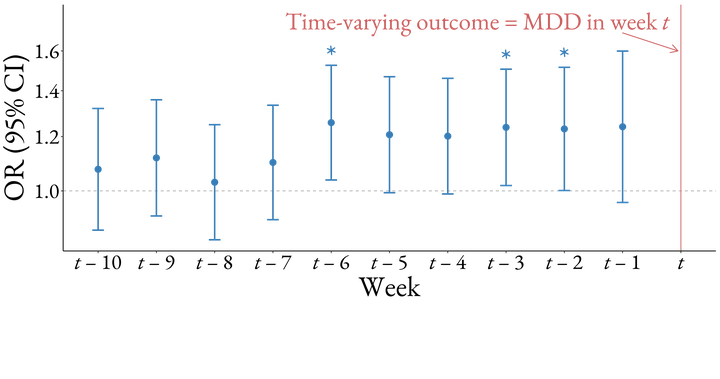Detecting adolescent depression through passive monitoring of linguistic markers in smartphone communication
 Lagged, within-person effects of first-person singular pronoun usage in a prior week (week t - 1, week t - 2, etc.) on MDD risk this week (week t)
Lagged, within-person effects of first-person singular pronoun usage in a prior week (week t - 1, week t - 2, etc.) on MDD risk this week (week t)Abstract
Background: Cross sectional studies have identified linguistic correlates of major depressive disorder (MDD) in smartphone communication. However, it is unclear whether monitoring these linguistic characteristics can detect when an individual is experiencing MDD, which would facilitate timely intervention. Methods: Approximately 1.2 million messages typed into smartphone social communication apps (e.g. texting, social media) were passively collected from 90 adolescents with a range of depression severity over a 12-month period. Sentiment (i.e. positive vs. negative valence of text), proportions of first-person singular pronouns (e.g. “I”), and proportions of absolutist words (e.g. “all”) were computed for each message and converted to weekly aggregates temporally aligned with weekly MDD statuses obtained from retrospective interviews. Idiographic, multilevel logistic regression models tested whether within-person deviations in these linguistic features were associated with the probability of concurrently meeting threshold for MDD. Results: Using more first-person singular pronouns in smartphone communication relative to one’s own average was associated with higher odds of meeting threshold for MDD in the concurrent week (OR = 1.29; p = .007). Sentiment (OR = 1.07; p = .54) and use of absolutist words (OR = 0.99; p = .90) were not related to weekly MDD. Conclusions: Passively monitoring use of first-person singular pronouns in adolescents’ smartphone communication may help detect MDD, providing novel opportunities for early intervention.